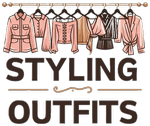The 1920s, often referred to as the “Roaring Twenties,” was a decade of unprecedented social, cultural, and economic change. This era of liberation and prosperity was reflected in its fashion, which broke free from the constraints of the past and embraced a new spirit of freedom and modernity. From the iconic flapper dresses to the daring swimwear, 1920s fashion was a revolution that continues to inspire designers and fashion enthusiasts to this day.
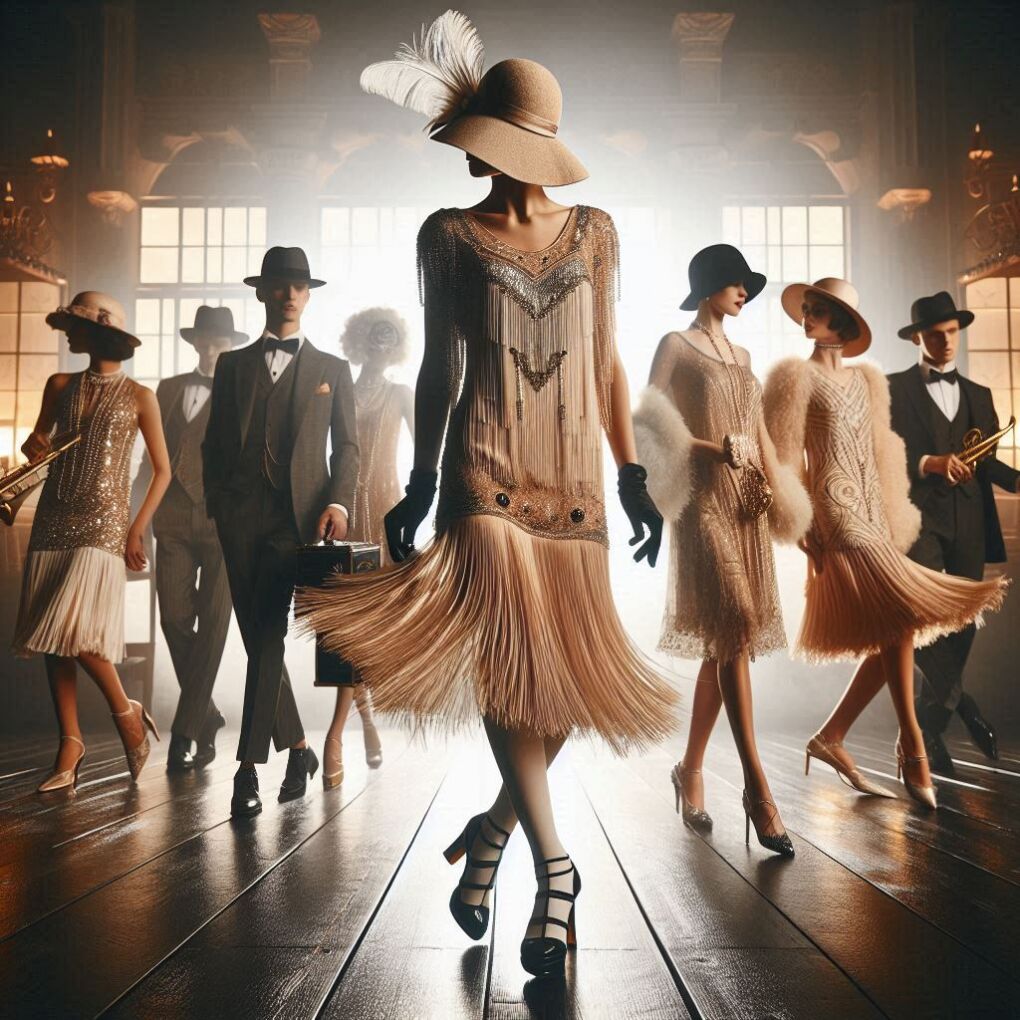
The Rise of the Flapper
The most emblematic figure of 1920s fashion was undoubtedly the flapper. These young women epitomized the new era’s spirit of independence and rebellion. They cut their hair short into bobs, wore makeup boldly, and chose clothing that allowed for greater movement and comfort.
“The Flapper awoke from her lethargy of sub-deb-ism, bobbed her hair, put on her choicest pair of earrings and a great deal of audacity and rouge and went into the battle. She flirted because it was fun to flirt and wore a one-piece bathing suit because she had a good figure … she was conscious that the things she did were the things she had always wanted to do.” – Zelda Fitzgerald
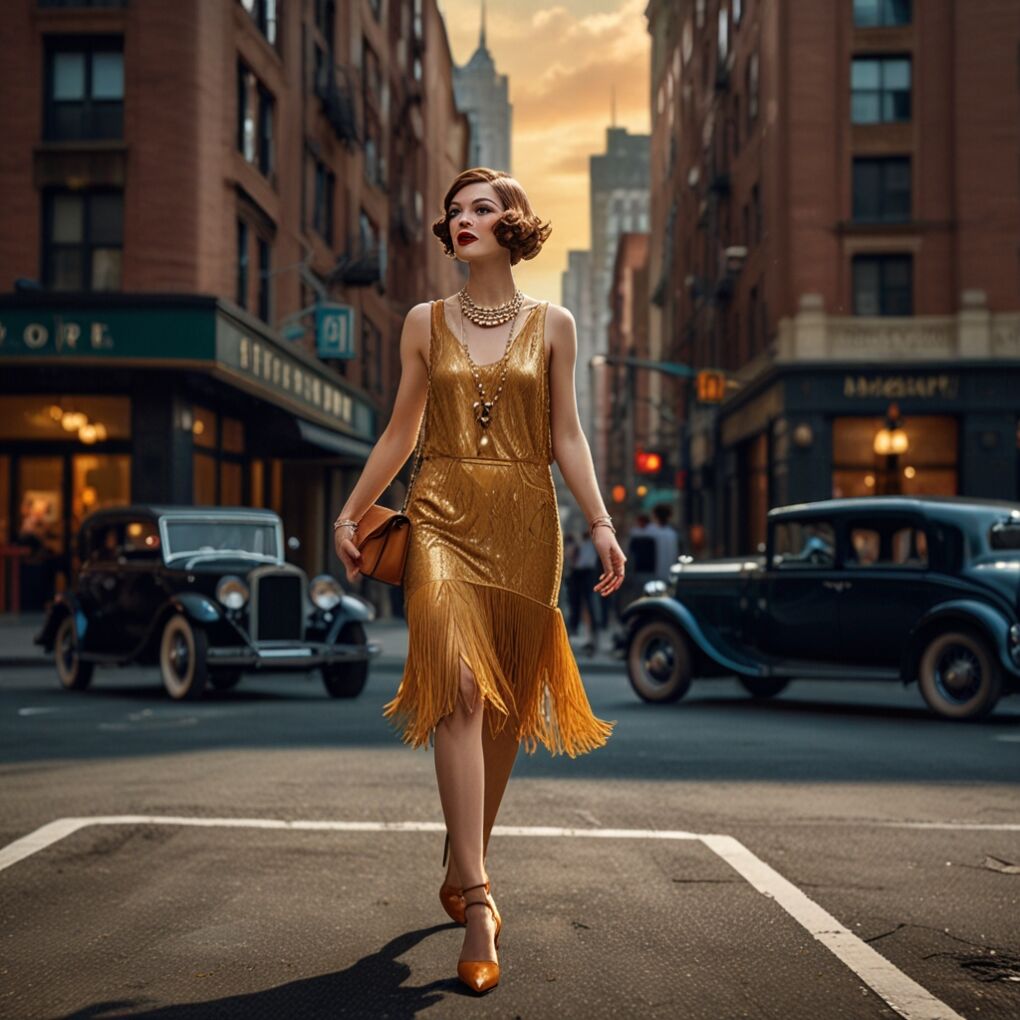
The flapper dress was the centrepiece of this new fashion. It featured:
- A loose, straight silhouette
- A dropped waistline (or no waistline at all)
- Hemlines that rose to the knee
- Light, flowing fabrics like chiffon and silk
- Embellishments such as beads, sequins, and fringe
These dresses allowed women to dance freely to the era’s popular jazz music, particularly the Charleston, which required vigorous movement. Designers like Coco Chanel were instrumental in popularizing this look, promoting comfort and simplicity over the restrictive corsets and long skirts of the previous decade.
The Flapper’s Complete Look
Beyond the dress, the flapper’s ensemble included several key elements:
- Cloche Hat: A tight-fitting, bell-shaped hat that framed the face.
- T-Strap Shoes: Low-heeled shoes that stay on during energetic dances.
- Long Cigarette Holder: A symbol of sophistication and rebellion.
- Rouge and Bold Lipstick: Often in shades of red or dark pink.
- Garter Belt: To hold up silk stockings, sometimes glimpsed while dancing.
Pro Tip: When recreating a flapper look, focus on the silhouette. The 1920s were about straight lines and a boyish figure. Avoid anything that cinches your waist, and opt for drop-waist dresses that hang straight from shoulder to hip.
Men’s Fashion: The Jazz Age Gentleman
While women’s fashion saw a dramatic shift, men’s fashion in the 1920s evolved more subtly. The overall trend was towards a more relaxed, sporty look, reflecting the decade’s love for leisure activities.
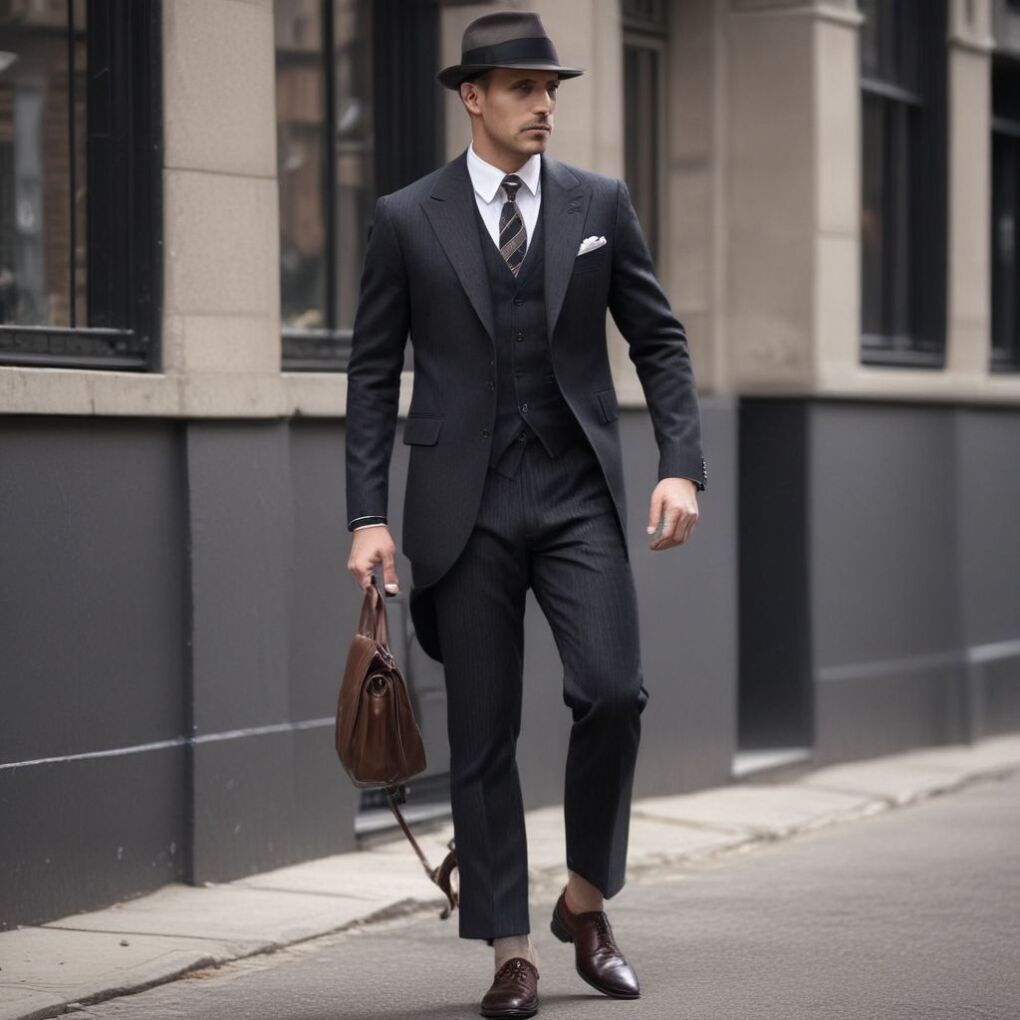
Suits
- Jackets: Single or double-breasted, with narrow lapels
- Trousers: High-waisted, wide-legged, often with cuffs
- Vests (waistcoats): Often contrasting colours or patterns
Casual Wear
- Oxford bags: Very wide-legged trousers
- Plus-fours: Baggy knickerbockers for golf
- Tennis shirts: The precursor to the polo shirt
Accessories
- Hats: Boater hats, fedoras, flat caps
- Ties: Bold patterns, often in bright colours
- Shoes: Two-tone “spectator” shoes, wingtips
Fashion icons like the Prince of Wales (later Edward VIII) influenced men’s style. His preference for softer, more comfortable tailoring led to innovations like the “London drape” suit, which featured a fuller chest and tapered waist.
The Well-Dressed Man’s Wardrobe
A fashionable man in the 1920s would have had a variety of outfits for different occasions:
| Occasion | Outfit Components |
|---|---|
| Business | Dark suit, white shirt, conservative tie |
| Social Club | Tweed jacket, flannel trousers, bow tie |
| Golf | Plus-fours, argyle socks, driving cap |
| Evening | Black tailcoat, white bow tie, top hat |
Pro Tip: For an authentic 1920s men’s look, pay attention to proportions. Jackets were shorter, trousers were higher-waisted and wider, and ties were shorter and wider than in modern times.
Swimwear: Baring More Than Ever Before
The 1920s saw a dramatic change in swimwear, as people began to frequent beaches and pools more often. Women’s swimsuits evolved from the cumbersome, full-coverage styles of the 1910s to more revealing and practical designs.
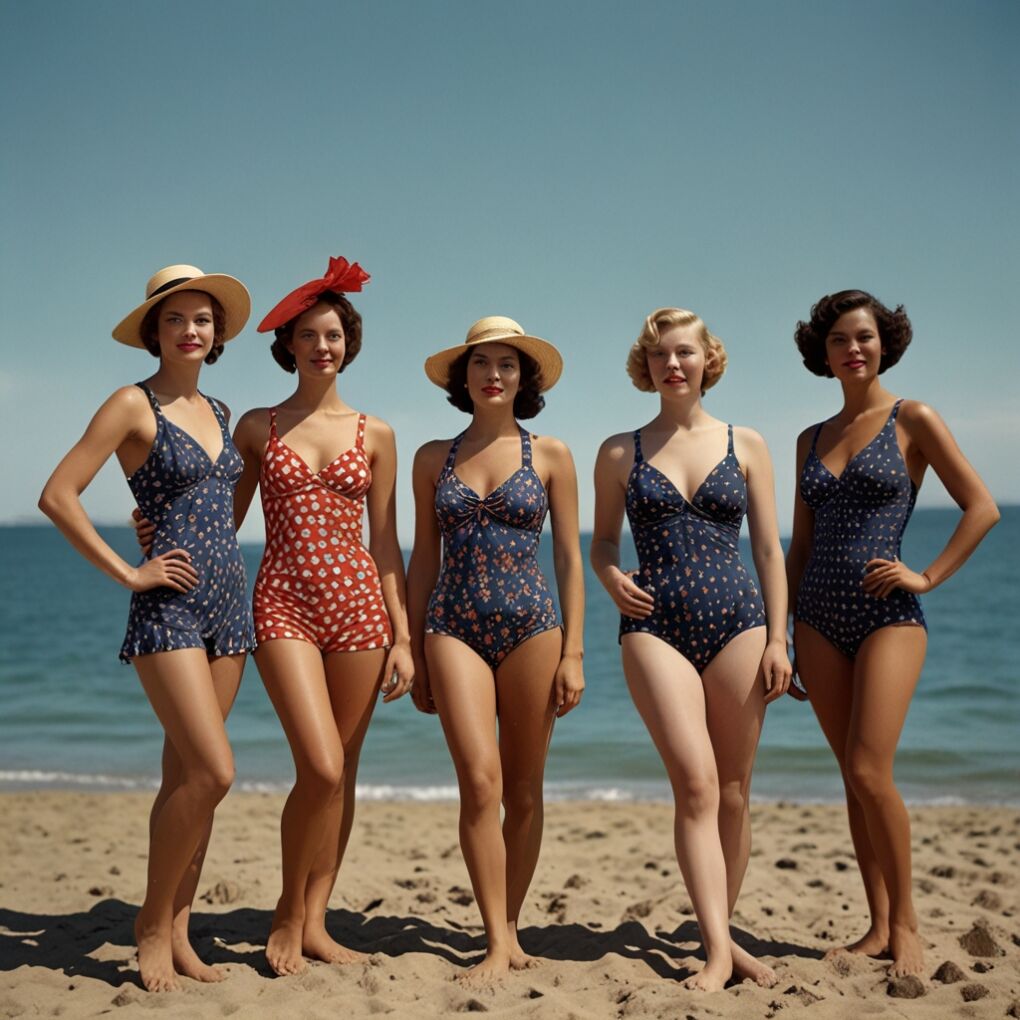
| Year | Women’s Swimwear | Men’s Swimwear |
|---|---|---|
| 1910s | Full-body wool suits with skirts | Full-body wool suits |
| The late 1920s | Shorter wool suits, less coverage | One-piece tanks with shorts |
| Late 1920s | Form-fitting, sleeveless suits | Bare-chested, belted shorts |
Notable changes in 1920s swimwear included:
- Use of more elastic materials like jersey
- Elimination of sleeves for better movement
- Introduction of built-in support for women
- Acceptance of bare legs for both genders
The most shocking development was when people like Johnny Weissmuller (later famous as Tarzan) began swimming shirtless. This daring move eventually led to the acceptance of men’s bare-chested swimwear.
The Jantzen Revolution
One brand that revolutionized swimwear was Jantzen. Originally a sweater company, they applied their knitting expertise to swimsuits:
- Rib-Stitch Design: Provided better fit and flexibility
- “Red Diving Girl” Logo: Became a symbol of modern swimwear
- Global Marketing: Sold in 31 countries by 1927
Jantzen’s suits were so popular that “Jantzen” became synonymous with swimsuits in many parts of the world.
Pro Tip: When choosing a retro swimsuit, look for high-waisted bottoms and halter tops. These provide more coverage while still capturing the 1920s spirit of liberation.
Accessories: The Finishing Touches
Accessories in the 1920s were not just additions but essential components of an outfit. They often made bold statements, reflecting the era’s exuberant spirit.
Women’s Accessories
- Cloche hats: Close-fitting, bell-shaped hats
- Long pearl necklaces
- Art Deco jewelry
- T-strap shoes
- Small, embellished handbags
Men’s Accessories
- Suspenders (braces)
- Pocket watches
- Signet rings
- Walking sticks (for formal occasions)
- Spats (covers for shoes)
Sunglasses also became fashionable in this decade, thanks to movie stars who wore them to shield their eyes from bright studio lights.
The Art Deco Influence
Art Deco, with its emphasis on geometry and modernity, heavily influenced 1920s accessories:
- Bracelets: Wide, hinged “cuff” styles
- Necklaces: Long sautoirs with tasselled ends
- Brooches: Often in sunburst or fan shapes
- Materials: Chrome, bakelite, enamel
High-end jewellers like Cartier and Van Cleef & Arpels created exquisite Art Deco pieces, while costume jewellery made the look affordable.
Pro Tip: Don’t overlook the power of accessories in a 1920s ensemble. A simple dress can be transformed with a long pearl necklace, a beaded handbag, and a cloche hat.
The Influence of Hollywood
The burgeoning film industry in Hollywood had a tremendous impact on 1920s fashion. Silent film stars became style icons, their glamorous looks emulated by fans worldwide.
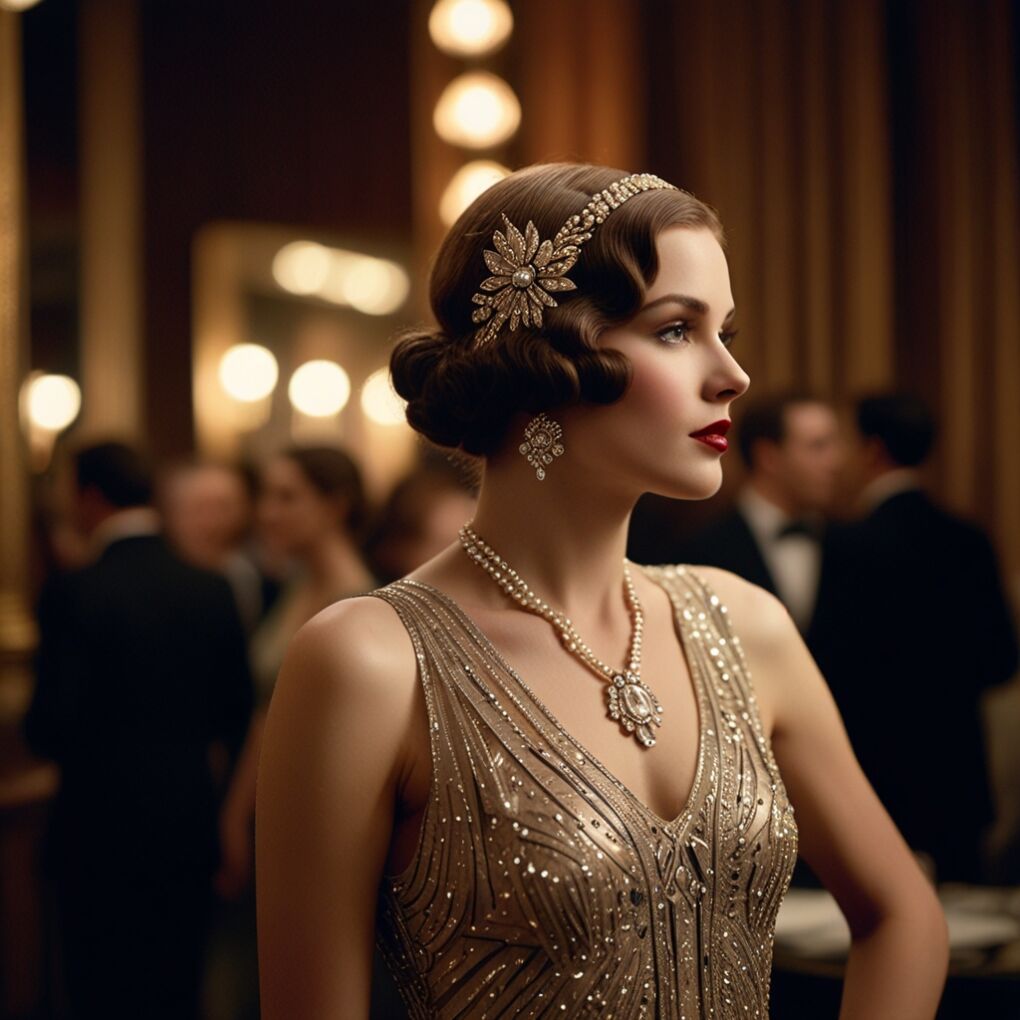
- Louise Brooks: Her severe black bob and bold makeup defined the flapper look.
- Clara Bow: Known as the “It Girl,” she popularized fitted sweaters and short skirts.
- Rudolph Valentino: His slicked-back hair and tailored suits set the standard for men’s style.
“I dress for the image. Not for myself, not for the public, not for fashion, not for men.” – Louise Brooks
Movies also introduced audiences to lavish costume dramas. Films like “The Ten Commandments” (1923) sparked a fascination with Egyptian motifs, which were incorporated into jewellery and textile designs.
The Silver Screen’s Fashion Impact
Hollywood’s influence extended beyond stars to the films themselves:
| Movie | Fashion Impact |
|---|---|
| The Great Gatsby (1926) | Popularized Oxford bags for men |
| Our Dancing Daughters (1928) | Set flapper fashion trends |
| Wings (1927) | Made leather jackets cool |
Studios like MGM had enormous costume departments that created thousands of garments. These often set trends, as moviegoers wanted to dress like the characters they saw on screen.
Sports and Fashion
The 1920s saw an explosion in the popularity of sports, which had a direct impact on fashion. Sportswear began to influence everyday clothing, making it more comfortable and functional.
| Sport | Fashion Influence |
|---|---|
| Tennis | Short-sleeved shirts, pleated skirts |
| Golf | Argyle socks, tweed caps, plus-fours |
| Skiing | Knit sweaters, jodhpurs |
| Horseback Riding | Jodhpurs, riding coats |
One of the most significant developments was Suzanne Lenglen’s appearance at Wimbledon in 1922. The French tennis star wore a short-sleeved, calf-length dress designed by Jean Patou, scandalizing traditionalists but setting a new standard for athletic wear.
The Activewear Revolution
The 1920s saw the birth of activewear as we know it:
- Lacoste Tennis Shirt (1926): The first polo shirt
- Keds Champion Sneakers (1916): Gained popularity in the ’20s
- Women’s Gym Suits: One-piece outfits for calisthenics
- Swimsuits: Transitioned from wool to jersey
Pro Tip: Incorporate sporty elements into your 1920s-inspired outfits. A cable-knit sweater or a pleated tennis skirt can add an authentic touch of Jazz Age athleticism.
Ethnic and Artistic Influences
The 1920s was a time of cultural exchange and artistic experimentation, both of which were reflected in fashion.
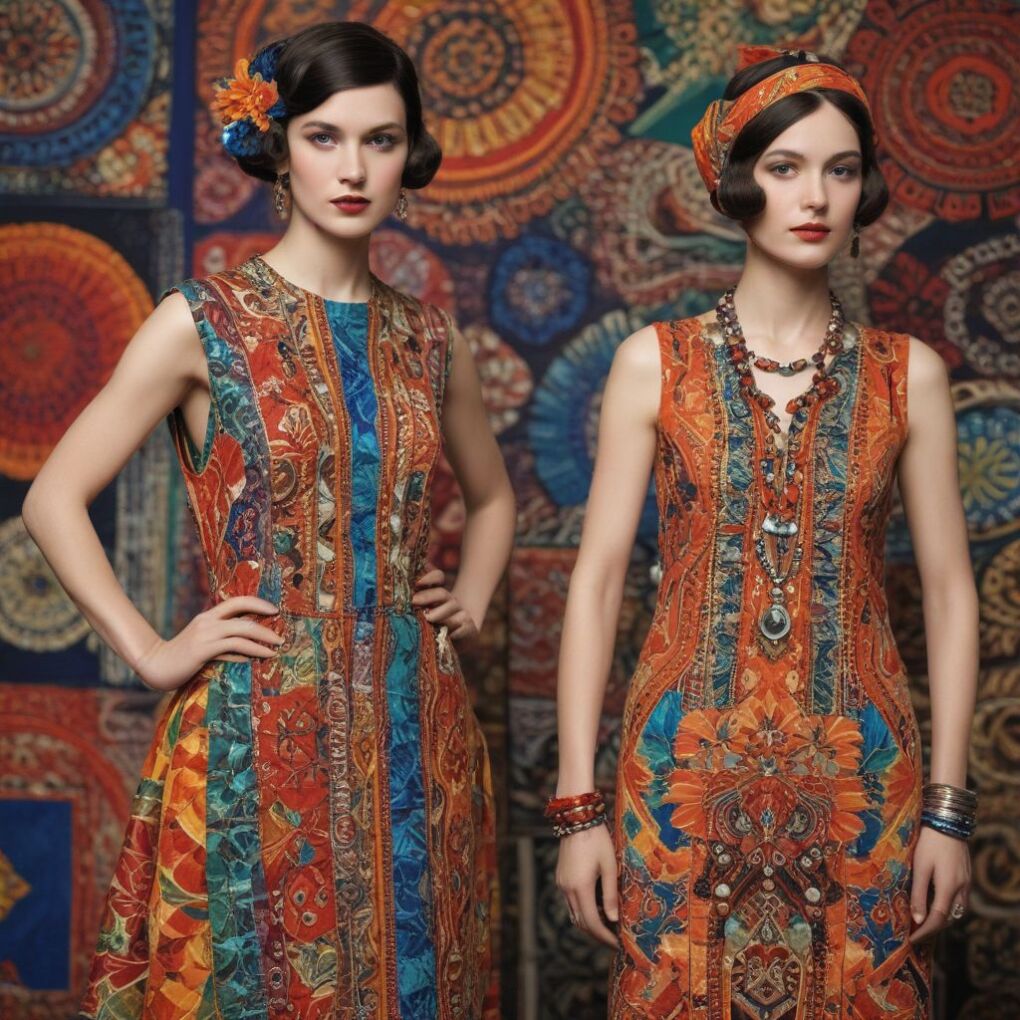
African and Egyptian Motifs
The Harlem Renaissance in New York celebrated African American culture, while the discovery of King Tutankhamun’s tomb in 1922 sparked an Egypt craze. These influences were seen in:
- Bold, geometric patterns
- Vibrant colour combinations
- Ankh symbols and hieroglyphs on Jewellery
Art Movements
- Art Deco: Angular shapes, metallic finishes
- Surrealism: Unusual motifs like eyes and lips
- Cubism: Fragmented, abstract patterns
Designer Sonia Delaunay, associated with the Orphism movement, created dresses that were essentially wearable paintings, featuring dynamic colour combinations.
The Eastern Influence
Asia, particularly China and Japan, had a significant impact on 1920s fashion:
- Kimono-Style Jackets: Often in silk brocade
- Mandarin Collars: On both men’s and women’s shirts
- Dragon Motifs: Embroidered on eveningwear
- Pyjamas: Inspired by Indian and Chinese styles, worn as loungewear
Fabrics and Colors
New technologies and cultural influences led to a diverse range of fabrics and colours in 1920s fashion.
Popular Fabrics
- Silk: For dresses and lingerie
- Cotton: For sportswear and day dresses
- Wool: For suits and coats
- Rayon: A new, affordable silk substitute
- Jersey: Stretchy and comfortable
Colour Trends
- Early 1920s: Soft pastels, muted tones
- Mid-1920s: Bold colours like Chinese red and jade green
- Late 1920s: Black for evening wear, brighter colours for day
Designers also experimented with surface treatments:
- Beading and sequins for evening wear
- Embroidery, often with Asian motifs
- Lamé fabrics for a metallic sheen
Textile Innovations
The 1920s saw several fabric innovations:
| Fabric | Properties | Common Uses |
|---|---|---|
| Rayon | Silk-like, affordable | Dresses, blouses |
| Crepe de Chine | Soft, slightly bumpy | Evening gowns |
| Satin | Glossy finish | Lingerie, eveningwear |
| Nylon | Strong, elastic (late ’20s) | Stockings |
Pro Tip: When choosing fabrics for a 1920s-inspired outfit, prioritize drape and movement. Chiffon, silk, and modern rayons capture the era’s love for fluidity.
The End of an Era: 1929 and Beyond
As the decade drew to a close, fashion began to shift again. The stock market crash of 1929 and the onset of the Great Depression marked the end of the exuberant Roaring Twenties.
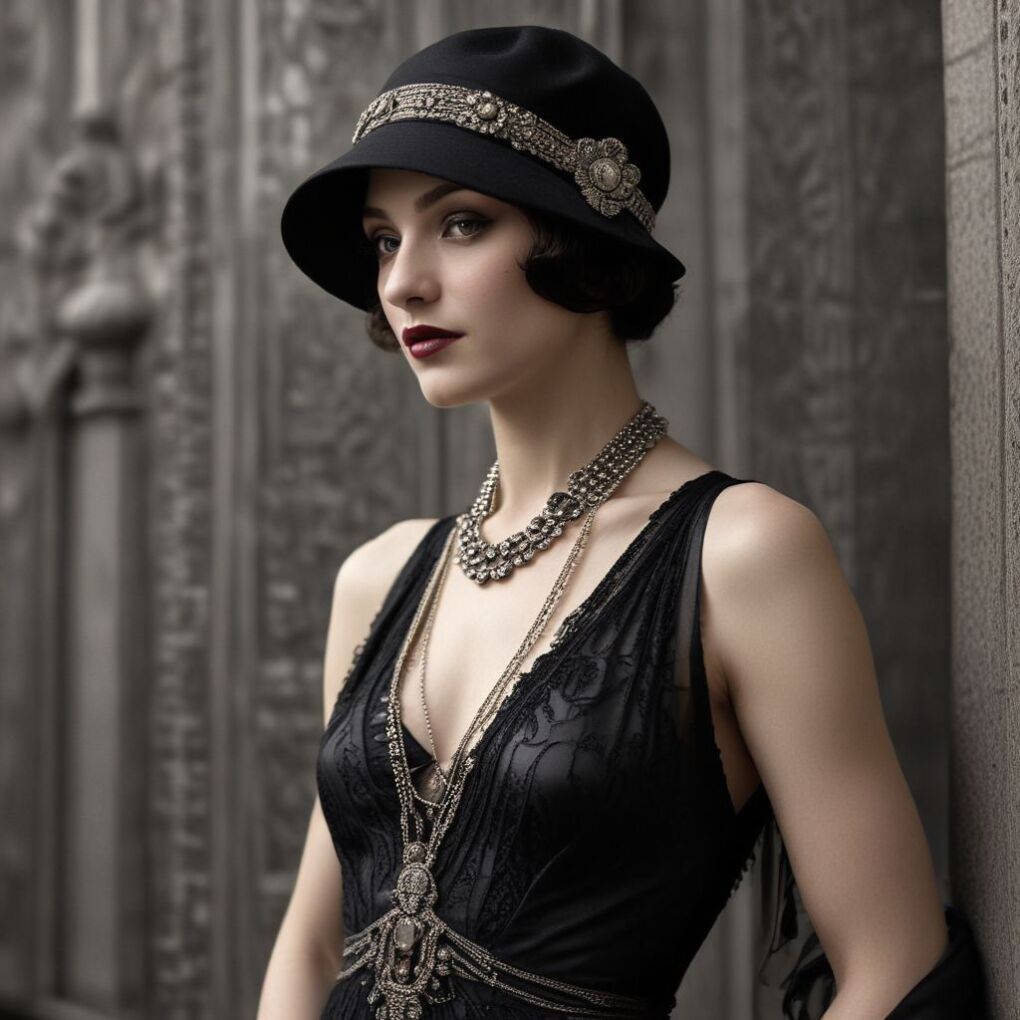
1930s fashion would:
- Return to longer hemlines
- Reintroduce waistlines
- Use less expensive fabrics
- Adopt a more conservative aesthetic
However, the impact of 1920s fashion was lasting. It had introduced:
- The concept of “sportswear” as everyday wear
- A focus on comfort and function
- The idea that women could dress more like men
- A celebration of youth culture
Transitional Pieces
Some items bridged the gap between 1920s exuberance and 1930s restraint:
- Midi Skirts: Longer than flapper dresses but not floor-length
- Puff-Sleeved Blouses: Added femininity to boyish shapes
- Two-Piece Suits: Jacket and skirt in matching fabric
- Bold Prints: Carrying over the ’20s love for pattern
Preserving 1920s Fashion
Today, there’s a growing interest in preserving and celebrating 1920s fashion. Museums and institutions are leading this effort:
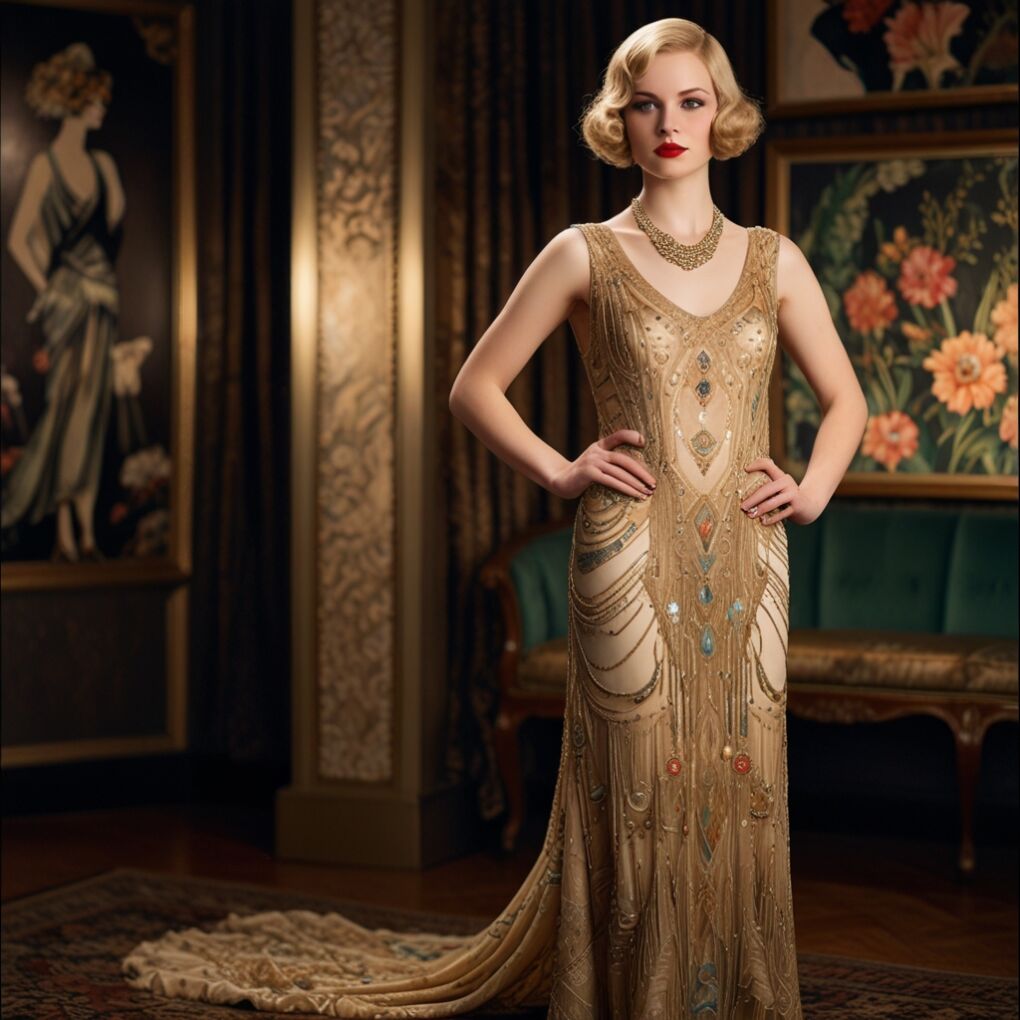
- The Metropolitan Museum of Art: Houses an extensive collection of 1920s garments, including pieces by Chanel and Patou.
- The Fashion Institute of Technology: Offers courses on vintage fashion preservation.
- The Victoria and Albert Museum: Features a large collection of Art Deco jewelry.
Vintage clothing stores and online marketplaces like Etsy also offer authentic 1920s pieces, though these can be delicate and expensive. For those wanting to experience the look without the cost, there are many reproduction vintage brands:
- Unique Vintage
- ModCloth
- Zaful
- The Urban Apparel
- FabGabs
These brands offer modern interpretations of 1920s styles, often with updated fits and more durable materials.
DIY 1920s Fashion
For the crafty, making your own 1920s-inspired garments is an option:
- Vogue Patterns: Offers vintage-style patterns
- Folkwear: Specializes in historical patterns
- Free Flapper Dress Tutorial: By Angela Kane on YouTube
Pro Tip: When sewing 1920s-style garments, avoid darts and fitted seams. The era’s signature look was all about straight lines and simple construction.
1920s Fashion in Modern Times
The influence of 1920s fashion can still be seen on today’s runways and in street style. Designers frequently revisit the era for inspiration:
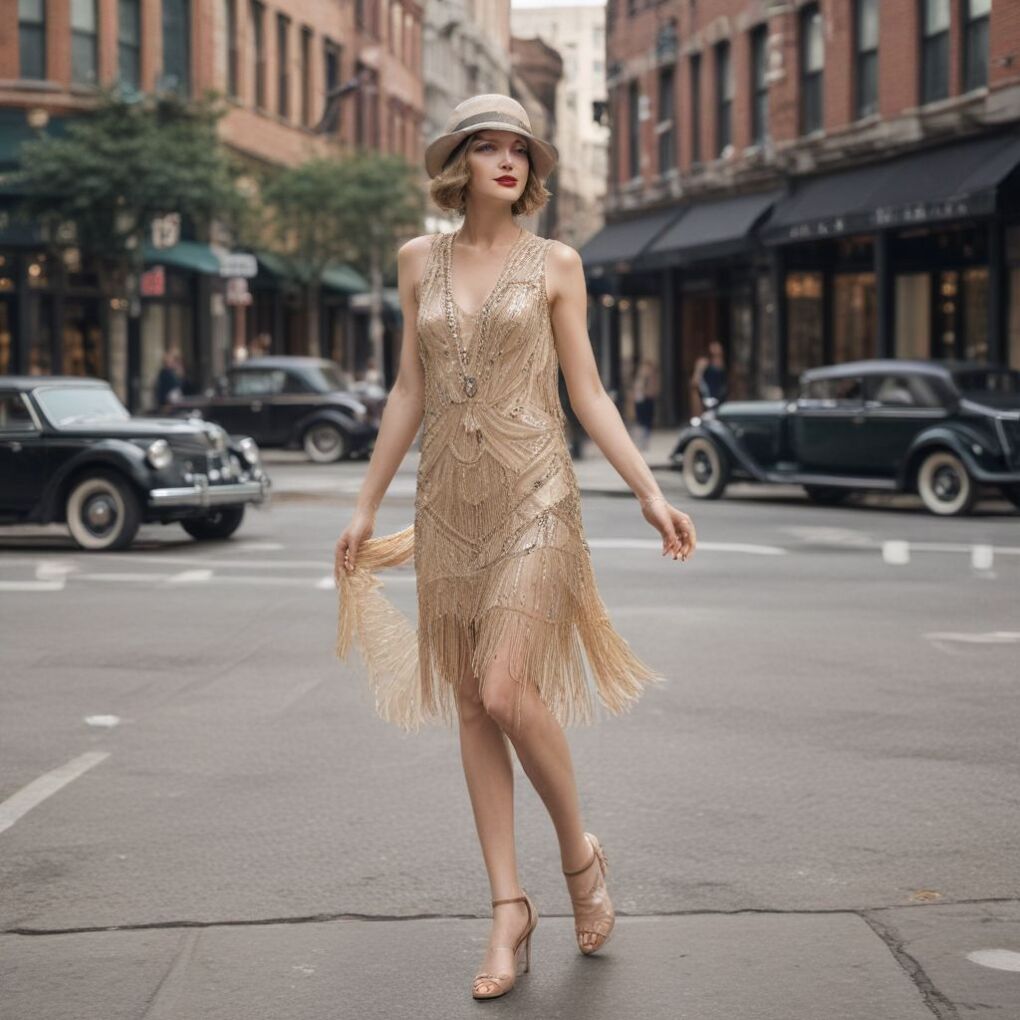
- Gucci’s Spring/Summer 2012 collection featured art deco patterns and fringe.
- Ralph Lauren’s Fall 2012 line was a direct homage to Downton Abbey’s 1920s costumes.
- The Great Gatsby’s 2013 film adaptation, with costumes by Prada, sparked a major 1920s fashion revival.
Contemporary designers who often channel 1920s vibes include:
- Anna Sui
- Marc Jacobs
- Erdem
- Alberta Ferretti
Elements of 1920s fashion that remain popular include:
- Drop-waist dresses
- Beaded and fringed evening wear
- Bold, geometric jewellery
- T-strap shoes
- Cloche-inspired hats
1920s-Inspired Commercial Products
Many modern brands offer products that capture the 1920s spirit:
| Brand | Product | 1920s Feature |
|---|---|---|
| Bésame Cosmetics | Black Cake Mascara | Authentic ’20s makeup |
| American Duchess | “Astor” T-Strap Shoes | Historically accurate design |
| Lena Hoschek | “Charleston” Dress | Beaded flapper style |
| Goorin Bros. | “Good Boy” Newsboy Cap | Classic ’20s shape |
| Jantzen | Heritage Collection | Inspired by their ’20s designs |
Pro Tip: When shopping for 1920s-inspired items, look for brands that specialize in vintage or historically inspired fashion. They’re more likely to get the details right, from fabric choices to embellishments.
Lingerie and Undergarments
The 1920s revolution in fashion extended to what was worn underneath. Undergarments evolved to accommodate the new, straighter silhouettes.
Key Items
- Bandeau Bras: Flattened the chest for a boyish look
- Step-In Chemise: Replaced cumbersome petticoats
- Tap Pants: Short, loose-fitting underwear
- Garter Belts: Held up silk stockings
High-end lingerie often featured luxurious details:
- Lace trims
- Silk ribbons
- Embroidered monograms
Iconic Brands
Some lingerie brands that defined the 1920s aesthetic:
- Chanel: Introduced jersey for undergarments
- Vanity Fair: Known for colourful, affordable pieces
- Kestos: Patented the first modern bra design
- Bien Jolie: Favored by Hollywood stars
Pro Tip: To achieve an authentic 1920s silhouette, it’s essential to start with the right undergarments. A bandeau bra and high-waisted tap pants will give you that signature straight-up-and-down shape.
Perfumes of the Jazz Age
Perfume became a major fashion accessory in the 1920s, with iconic fragrances that embodied the era’s spirit.
| Perfume | Brand | Year | Notes |
|---|---|---|---|
| Chanel No. 5 | Chanel | 1921 | Aldehydes, jasmine, rose |
| Shalimar | Guerlain | 1925 | Bergamot, iris, vanilla |
| Arpège | Lanvin | 1927 | Aldehydes, honeysuckle, sandalwood |
| Joy | Jean Patou | 1929 | Jasmine, rose, ylang-ylang |
These fragrances broke from the single-note scents of the past, using complex blends that mirrored the decade’s cultural complexity.
Pro Tip: To complete your 1920s look, choose a perfume that was actually worn in the era. A spritz of Chanel No. 5 or Shalimar will add an authentic touch of Jazz Age glamour.
Children’s Fashion: Mini Flappers and Dapper Dans
Even children’s fashion reflected the 1920s aesthetic, with miniature versions of adult styles.
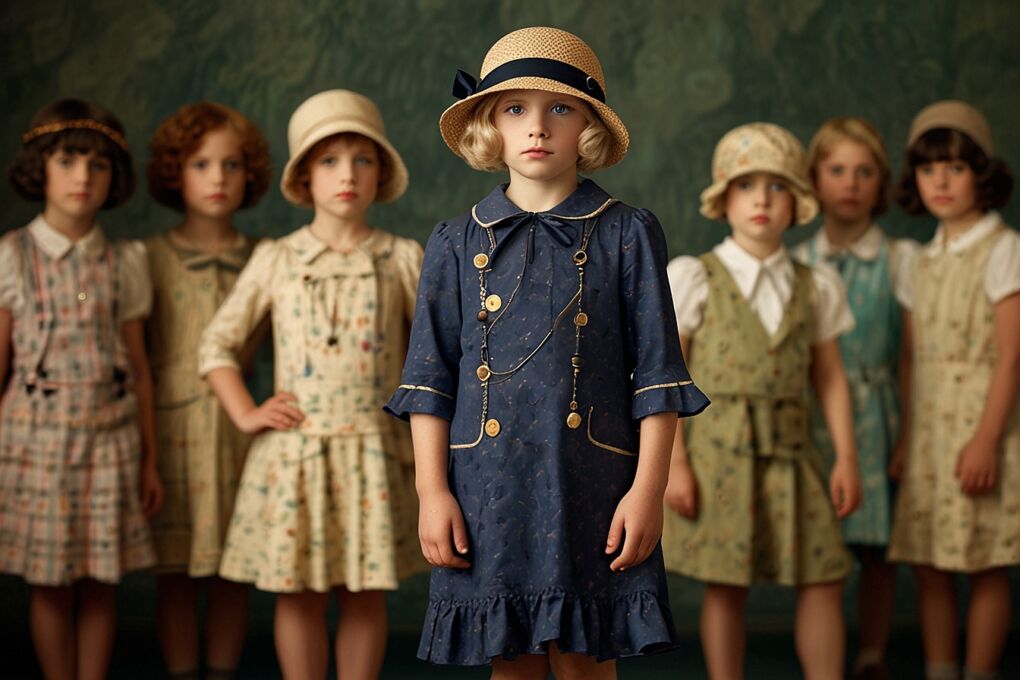
Girls’ Fashion
- Drop-waist dresses
- Mary Jane shoes
- Bobbed haircuts
- Tam o’ Shanter hats
Boys’ Fashion
- Knickers (short pants)
- Button-up shirts with Peter Pan collars
- Bow ties
- Flat caps
For formal occasions, boys might wear a miniature version of a man’s suit, complete with a vest and short necktie.
Pro Tip: If you’re planning a 1920s-themed family photo shoot, don’t forget to dress the kids in era-appropriate styles. It’s a fun way to create a cohesive, authentic look.
The Economics of 1920s Fashion
The democratization of fashion was a key theme in the 1920s, driven by several economic factors:
- Mass Production: Assembly lines made clothing cheaper
- Mail-Order Catalogs: Brought fashion to rural areas
- Installment Plans: Allowed buying on credit
- Working Women: Had their own money to spend
The Rise of Ready-to-Wear
Designer Gabrielle “Coco” Chanel was instrumental in promoting ready-to-wear fashion:
- Used less expensive fabrics like jersey
- Simplified designs for easier manufacturing
- Opened boutiques in resort towns
Pro Tip: The 1920s were about making high style accessible. When recreating the look, don’t feel you need to break the bank. Mix high-end pieces with affordable basics, just like a savvy ’20s consumer would.
Conclusion: A Decade That Changed Fashion Forever
The 1920s was a transformative period in fashion history. It was a time when clothing reflected—and facilitated—dramatic social changes, particularly for women. The loose, boyish silhouettes allowed for greater physical freedom, mirroring women’s expanding social freedoms as they gained the right to vote and entered the workforce in unprecedented numbers.
This decade also saw fashion become more democratic. Mass production made stylish clothing more affordable, while Hollywood and magazines spread new trends quickly across different social classes. Sports and leisure activities influenced everyday wear, making comfort a priority for perhaps the first time in fashion history.
Moreover, the 1920s was when fashion began to celebrate youth. In previous eras, young people aspired to dress like their elders as a sign of maturity. In the 1920s, this dynamic flipped; suddenly, older people were trying to look younger.
The 1920s Legacy in Modern Fashion
Today, nearly a century later, we are still feeling the effects of this revolutionary decade:
- Body-Conscious Designs: Like the ’20s, modern fashion often eschews rigid structures.
- Athleisure: Echoes the ’20s integration of sportswear into daily life.
- Gender-Fluid Fashion: Recalls the era’s blurring of gender lines.
- Fast Fashion: Reflects the ’20s democratization of style.
- Celebrity Influence: Just as potent now as it was then.
When modern women opt for comfortable, androgynous styles, or when designers create collections that celebrate diversity and cultural exchange, they are, in many ways, channelling the spirit of the 1920s.
Pro Tip: To truly embrace 1920s style, it’s not just about the clothes—it’s about the attitude. The women who defined this era were bold, independent, and unapologetically modern. When you wear your flapper dress or cloche hat, carry yourself with that same confidence and zest for life.
Far from being a fleeting trend, 1920s fashion fundamentally changed how we think about clothing, making it a perennial source of inspiration. It shows us that fashion is not just about aesthetics; it’s a powerful medium that reflects and shapes our social norms. As we continue to navigate questions of identity, freedom, and cultural exchange in the 21st century, the fashions of the Roaring Twenties offer not just stylish inspiration, but also valuable lessons.
